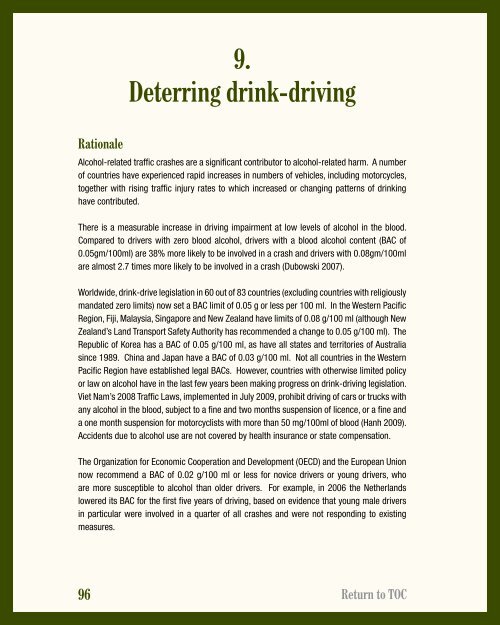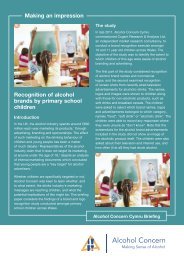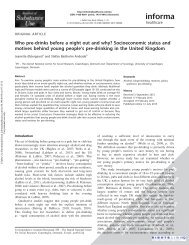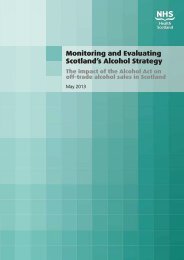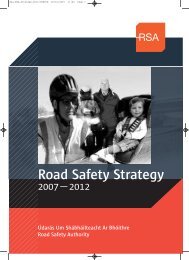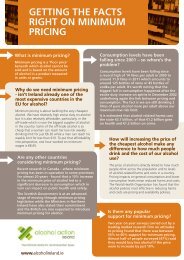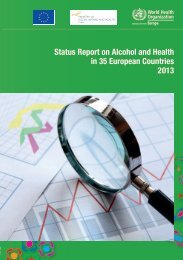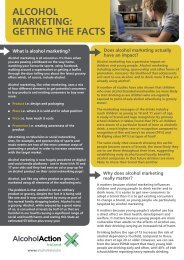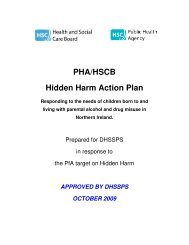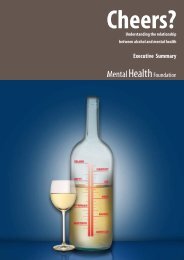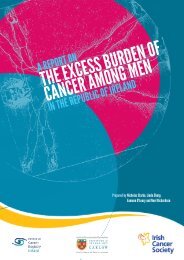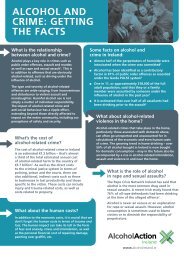Addressing the harmful use of alcohol - WHO Western Pacific Region
Addressing the harmful use of alcohol - WHO Western Pacific Region
Addressing the harmful use of alcohol - WHO Western Pacific Region
You also want an ePaper? Increase the reach of your titles
YUMPU automatically turns print PDFs into web optimized ePapers that Google loves.
9.<br />
Deterring drink-driving<br />
Rationale<br />
Alcohol-related traffic crashes are a significant contributor to <strong>alcohol</strong>-related harm. A number<br />
<strong>of</strong> countries have experienced rapid increases in numbers <strong>of</strong> vehicles, including motorcycles,<br />
toge<strong>the</strong>r with rising traffic injury rates to which increased or changing patterns <strong>of</strong> drinking<br />
have contributed.<br />
There is a measurable increase in driving impairment at low levels <strong>of</strong> <strong>alcohol</strong> in <strong>the</strong> blood.<br />
Compared to drivers with zero blood <strong>alcohol</strong>, drivers with a blood <strong>alcohol</strong> content (BAC <strong>of</strong><br />
0.05gm/100ml) are 38% more likely to be involved in a crash and drivers with 0.08gm/100ml<br />
are almost 2.7 times more likely to be involved in a crash (Dubowski 2007).<br />
Worldwide, drink-drive legislation in 60 out <strong>of</strong> 83 countries (excluding countries with religiously<br />
mandated zero limits) now set a BAC limit <strong>of</strong> 0.05 g or less per 100 ml. In <strong>the</strong> <strong>Western</strong> <strong>Pacific</strong><br />
<strong>Region</strong>, Fiji, Malaysia, Singapore and New Zealand have limits <strong>of</strong> 0.08 g/100 ml (although New<br />
Zealand’s Land Transport Safety Authority has recommended a change to 0.05 g/100 ml). The<br />
Republic <strong>of</strong> Korea has a BAC <strong>of</strong> 0.05 g/100 ml, as have all states and territories <strong>of</strong> Australia<br />
since 1989. China and Japan have a BAC <strong>of</strong> 0.03 g/100 ml. Not all countries in <strong>the</strong> <strong>Western</strong><br />
<strong>Pacific</strong> <strong>Region</strong> have established legal BACs. However, countries with o<strong>the</strong>rwise limited policy<br />
or law on <strong>alcohol</strong> have in <strong>the</strong> last few years been making progress on drink-driving legislation.<br />
Viet Nam’s 2008 Traffic Laws, implemented in July 2009, prohibit driving <strong>of</strong> cars or trucks with<br />
any <strong>alcohol</strong> in <strong>the</strong> blood, subject to a fine and two months suspension <strong>of</strong> licence, or a fine and<br />
a one month suspension for motorcyclists with more than 50 mg/100ml <strong>of</strong> blood (Hanh 2009).<br />
Accidents due to <strong>alcohol</strong> <strong>use</strong> are not covered by health insurance or state compensation.<br />
The Organization for Economic Cooperation and Development (OECD) and <strong>the</strong> European Union<br />
now recommend a BAC <strong>of</strong> 0.02 g/100 ml or less for novice drivers or young drivers, who<br />
are more susceptible to <strong>alcohol</strong> than older drivers. For example, in 2006 <strong>the</strong> Ne<strong>the</strong>rlands<br />
lowered its BAC for <strong>the</strong> first five years <strong>of</strong> driving, based on evidence that young male drivers<br />
in particular were involved in a quarter <strong>of</strong> all crashes and were not responding to existing<br />
measures.<br />
96 Return to TOC


